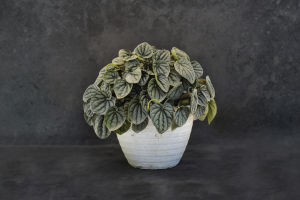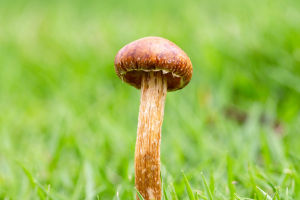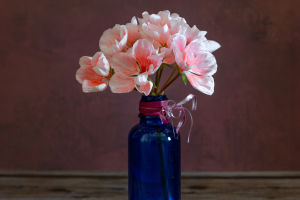Hydrangeas are among the most versatile and beloved flowers in the world. Known for their vibrant colors and large, ball-shaped blooms, hydrangeas make a striking addition to any garden or landscape.
Whether you’re a seasoned gardener or just starting out, these flowers can bring an instant burst of color and charm to your outdoor space. But there’s more to hydrangeas than just their beautiful blooms—they come in a variety of types, each offering unique features and care requirements.
The Different Types of Hydrangeas
There are several types of hydrangeas, each with its own distinct characteristics. The most common types include:
1. Bigleaf Hydrangea (Hydrangea macrophylla) – Known for its large, showy flowers, the bigleaf hydrangea is the classic variety found in many gardens. Its blooms can be blue, pink, or purple, depending on the soil pH.
2. Panicle Hydrangea (Hydrangea paniculata) – These hydrangeas have cone-shaped blooms that are often white, turning to pink or red as they age. They tend to be hardier and can tolerate more sun than other varieties.
3. Smooth Hydrangea (Hydrangea arborescens) – Known for its round, white flower heads, this variety is very easy to grow and is often used for hedging or as a backdrop in gardens.
4. Oakleaf Hydrangea (Hydrangea quercifolia) – With unique, oak-like leaves and cone-shaped flowers that range from white to pink, oakleaf hydrangeas are perfect for adding texture to your garden. Their leaves also turn beautiful colors in the fall.
Each type of hydrangea has specific care requirements, so it’s important to choose the right variety for your garden’s needs.
Hydrangeas in Landscaping: More Than Just Flowers
Hydrangeas are not just for flower beds—they can be used creatively throughout your landscaping. Due to their versatile nature, hydrangeas work well in many design schemes, whether you’re aiming for a formal garden, a cottage-style setting, or even a modern outdoor space.
1. Hedges and Privacy Screens – Hydrangeas can be used as dense hedges to create privacy or define the boundaries of your garden. Their lush, full blooms provide both beauty and function, blocking the view from the outside.
2. Foundation Plantings – If you’re looking to enhance the foundation of your home, hydrangeas are an excellent choice. They offer year-round interest with their striking foliage, flowers, and fall color.
3. Container Gardening – For those with limited space, hydrangeas can thrive in containers. Placing them on your patio or balcony gives you a chance to enjoy their beauty even if you don’t have a large garden.
Hydrangea Care: Essential Tips for Thriving Plants
Hydrangeas are relatively easy to care for, but there are a few essential tips that will ensure they thrive in your garden:
1. Soil Requirements – Hydrangeas prefer well-drained, moist soil. They can tolerate a range of soil types, but acidic soil encourages blue flowers, while alkaline soil produces pink blooms. If you want to change the color of your hydrangeas, adjusting the pH of the soil can make a difference.
2. Light and Location – Most hydrangeas prefer partial shade, especially in hot climates. While some varieties can tolerate full sun, they may need extra watering to prevent wilting. Choose a location that gets morning sun and afternoon shade for optimal growth.
3. Watering – Regular watering is key to keeping hydrangeas healthy. They prefer consistent moisture, so water deeply once or twice a week, especially during dry spells. Make sure the soil doesn’t dry out, but also avoid overwatering, as hydrangeas don’t like soggy roots.
4. Pruning – Pruning hydrangeas depends on the variety, but generally, it’s best to prune after flowering to encourage healthy growth the following season. Removing dead or spent blooms helps keep the plant looking tidy and promotes better air circulation.
Hydrangeas in Your Home: Beyond the Garden
Hydrangeas can also be brought indoors to add a touch of elegance to your home. Cut hydrangea flowers make beautiful arrangements for tables, entryways, and even as gifts. Their ability to dry out naturally also makes them ideal for creating long-lasting floral displays that can be used throughout the year.
1. Fresh Arrangements – Whether placed in a vase or added to mixed floral arrangements, fresh hydrangeas bring color and sophistication to your living room or dining area.
2. Dried Hydrangeas – Dried hydrangea flowers maintain their shape and texture, making them perfect for creating wreaths, centerpieces, and other decorative items. Their muted tones make them versatile and easy to incorporate into different decor styles.
Why Hydrangeas Should Be in Every Garden
Hydrangeas bring lasting beauty and charm to any garden. Their vibrant blooms, unique textures, and rich symbolism make them a wonderful choice for creating colorful borders, lush hedges, or eye-catching garden corners. With their impressive ability to adapt to different soils and light conditions, they thrive in a variety of climates and settings.
Are you planning to welcome hydrangeas into your garden? We’d love to hear about your favorite varieties and how you plan to showcase their beauty at home. Let’s inspire each other and grow a little more magic together—happy gardening!
Hydrangeas - everything you need to know about growing hydrangeas in your garden
Video by The Middle-Sized Garden


